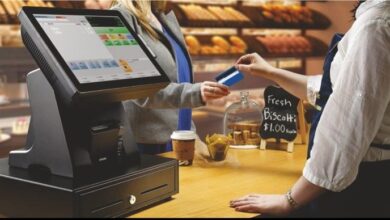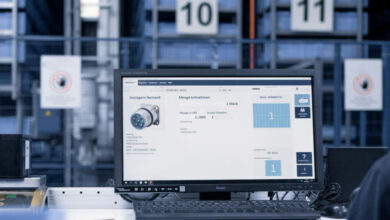Impact of Changing Consumer Preferences on Packaging Industries

A dynamic and ever-evolving consumer preference significantly affects different industries. Undoubtedly, the packaging industry is one of those sectors that is greatly affected by these preferences. Personalized and eco-friendly packaging solutions have become more popular among consumers over the past few years.
Packaging is a defining example of an industry profoundly shaped by consumer demands and desires. The packaging industry is at a crossroads as shoppers’ tastes, values, and priorities transform. The visual identity of products changes as consumer preferences and packaging practices changes. There is also a redefining of sustainability and innovation.
Consumer Demand for Personalization
Personalized products drive today’s market. Generic and one-size-fits-all products and services do not satisfy all consumers today. Aspirations, preferences, and needs depend on preferences.
Why is personalization so popular? There are several reasons:
- The Internet and technology have made online access to information and products a given for consumers today. Instant access has led to an increase in the demand for personalized experiences.
- The digital age has seen the proliferation of consumer data exponentially. Analysis of this data provides insights into consumer preferences, behaviors, and purchasing habits. Businesses can create tailored offers and recommendations using this data.
- A customized experience connects brands and consumers. Knowing consumers’ preferences fosters brand loyalty.
- Customization makes decision-making easier for consumers and results in a better consumer experience. Consumers can save time, effort, and money by curating content and recommending tailored products.
- A world filled with choices makes choosing products and services that reflect one’s identity essential. Their ability to express themselves through purchases enhances their ability to express themselves.
- Online platforms and social media have facilitated personalized experiences. Consumers will likely share positive, personalized interactions with their social circles, encouraging others to seek similar interactions.
One-size-fits-all packaging is slowly giving way to personalized packaging solutions. Increasing demand for custom printed boxes reflects consumers’ desire for products that reflect their individuality. They also convey exclusivity and uniqueness in addition to protecting the product. Establishing brand loyalty and creating deeper customer relationships will be easier for businesses if they embrace this trend.
Branding Through Customization
Companies use branding through customization to establish a solid and distinct identity in the market. Designing products, services, and experiences considers customer preferences, needs, and values. Communication like this can help businesses strengthen their connections with audiences, foster brand loyalty, and expand.
In an increasingly crowded market, brands that customize can stand out from their competitors. An emotional connection and sense of ownership can shape customers’ interactions with brands.
It is nevertheless essential to incorporate a brand logo into marketing campaigns to ensure success. By customizing boxes with logos, brands become more visible and more recognizable. Unboxing experiences that consumers remember and recommend are more likely to be recognized by brands. In response, packaging industries have had to adapt and offer innovative designs to meet the growing demand for custom boxes with logo.
Technological Advancements
Thanks to technological advancements, the packaging industry has become more accessible and cost-effective to customizing. With digital printing techniques, intricate designs, and high-quality images can be printed on custom boxes. A third benefit of 3D modeling is that it enables companies to provide consumers with virtual previews of their custom packaging before they purchase it, which makes the purchasing process more accessible. Innovations such as these have further increased demand for custom packaging.
Sustainable Packaging Solutions
In a product’s lifecycle, sustainable packaging solutions emphasize the responsibility of the environment and social welfare. The solutions minimize the negative environmental impacts of packaging while protecting and presenting the products. In recent years, sustainable packaging has increased attention as an environmental concern.
The following are some critical components of a sustainable packaging solution:
- Material Selection
- Minimalism and Right-sizing
- Reduced Packaging
- Reusable Packaging
- Recyclability
- Biodegradability and Compostability
- Innovative Materials
- Supply Chain Optimization
- Consumer Education
- Extended Producer Responsibility (EPR)
- Collaboration and Regulation
Increasing consumer awareness of the environment has led to a trend toward eco-friendly products. Custom cardboard boxes made from eco-friendly materials are in high demand because of this shift. The importance of sustainable packaging among business owners is attracting a growing number of environmentally conscious consumers. It is our goal to streamline the packaging industry and explore biodegradable materials.
Challenges and Opportunities
It’s true that changing consumer preferences offer packaging industries opportunities, but they also present challenges. The need for efficient workflow management is a result of mass customization, which strains production processes. Pricing strategies may be affected by the higher cost of personalized packaging. Moreover, ensuring the sustainability of custom packaging materials remains a challenge, as some eco-friendly options might not be as readily available or cost-effective.
Final Thoughts
Adapting and innovating are critical for packaging manufacturers in response to consumers’ rising demands for sustainability, convenience, and aesthetics. Eco-friendly materials, simplified packaging designs, and enhanced functionality are being developed to meet changing consumer demands.
Further, e-commerce and digital platforms have increased demand for packaging solutions that protect products during transit while providing an enjoyable unboxing experience. Packaging industries have been exploring new ways to create innovative packaging to balance functionality and branding.
Packaging companies must keep abreast of consumer sentiments and market trends in this rapidly evolving market. Collaborating across industries, embracing technological advancements, and being environmentally conscious is essential for adapting to changing consumer preferences.
“Shortly, the packaging industry’s ability to adapt to these changing dynamics will determine its success.”



